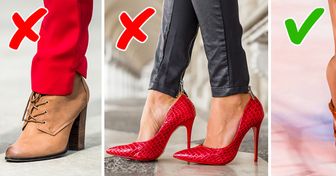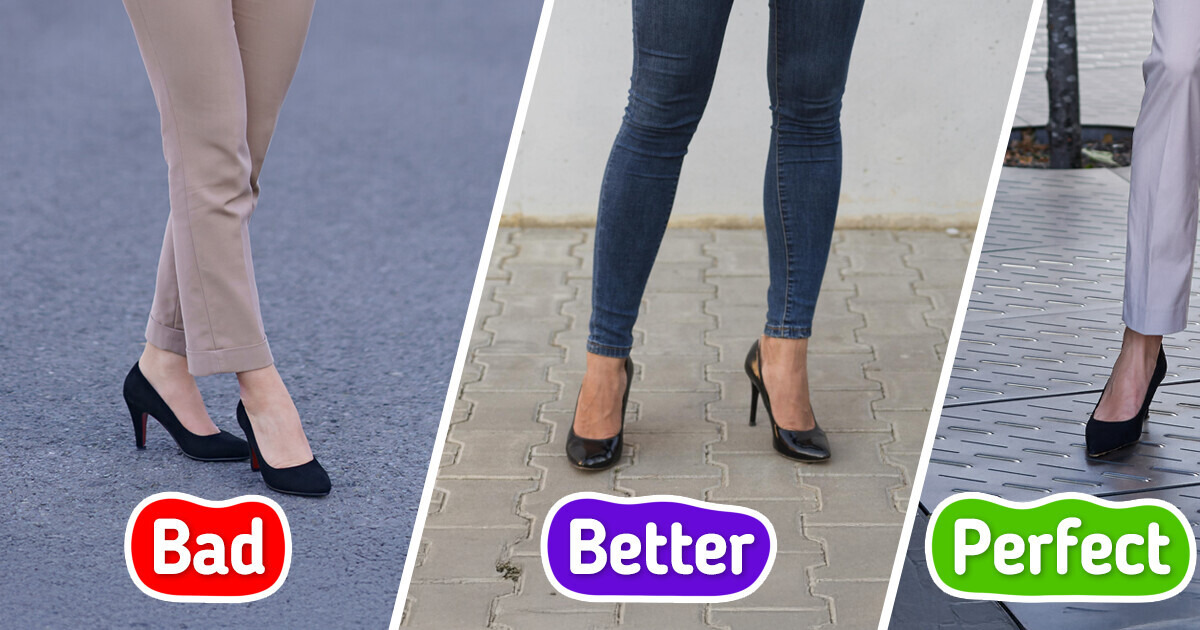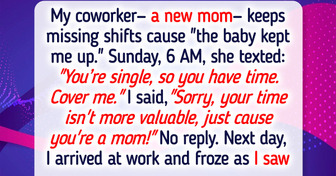10+ Outdated Shoe Styles That Ought to Be Banned From Our Closets, and New Styles You Can Replace Them With


Your body language significantly impacts how people perceive you, especially in professional settings. While it's important to be yourself during casual conversations, projecting the right demeanor at work can shape perceptions and affect your future opportunities.
Nonverbal communication involves body language—a message conveyed without words. Subtle or obvious body movements and gestures can provide clear indications of what someone might be thinking.
Only a small percentage—approximately 7% to 10%—of what is communicated is expressed through spoken words, while at least 85% of interpersonal communication is paraverbal or nonverbal. Individuals who are under stress or experiencing strong emotions often communicate even more valuable information through these means.
According to a study conducted by neuroscientists, people who display a small smile along with a slight elevation of their eyebrows while conversing tend to generate greater sympathy and trust in their conversation partners.
When seeking support or attempting to establish communication, we typically look for someone who appears friendly and willing to listen, rather than someone who seems distant, uncomfortable, or disengaged. Simple gestures can significantly enhance our interactions with others.
During a conversation, your posture plays a crucial role, especially when seated. Leaning forward indicates that you are attentive and interested, while leaning back can suggest disinterest.
People who walk with their heads down may appear introverted or lack self-confidence, whereas those with their heads held high exude security and pride. Open postures—with arms and legs positioned openly—signal engagement, while crossed arms and legs suggest defensiveness.
In important settings like meetings or job interviews, maintaining a straight and relaxed posture, with shoulders back and head up, conveys confidence. Conversely, a hunched posture indicates insecurity or nervousness. Even the orientation of your feet can send messages, so be mindful of your body language in all interactions.
Many believe that avoiding eye contact indicates lying. However, this can stem from cultural, social, or psychological differences. In some cultures, brief eye contact is acceptable, while in others it is rude. An introvert might also avoid eye contact. Watch the eye muscles; they tense when someone feels angry, uncomfortable, or stressed.
Instead of fixating on specific gestures, observe a person's typical behavior versus any deviations. Misinterpreting signals can occur if you overlook this. For example, what seems like anxiety in an active person may just be normal behavior.
Meanwhile, someone lacking empathy might mimic expressions to manipulate others' reactions.
It is often said that every action you take can provide insight into your personality, including how you walk, speak, or carry yourself. Here are four standing positions that can offer insights into your character.
It is believed that most people tend to point their feet toward those they identify with, such as a best friend or someone they consider a leader. To communicate your interest in another person, try to keep your feet aligned while maintaining an upright posture. This body language also conveys self-confidence. In contrast, if your feet point outward, it may signal nervousness, anxiety, discomfort, or a desire to leave.
It's important to note that people often form impressions based on your foot positioning. Therefore, if you want to be well-liked, it's crucial to present your best stance. However, remember to remain as natural as possible.
According to Michael Ellsberg, a body language expert, eye contact is one of the most important tools for face-to-face interaction. Proper eye contact signifies honesty, sincerity, approachability, attentiveness, and a willingness to listen. Just be careful not to come across as overly inquisitive; otherwise, it can be a very effective communication method.
A person who maintains eye contact during conversations demonstrates self-confidence and can instill a sense of security. Conversely, looking away or down while speaking to someone is often perceived as a sign of insecurity.
Lillian Glass, another body language expert and author of The Body Language Advantage, states that strong eye contact is the greatest indicator of confidence. "Confident people are always looking up, never down at the table, the ground, or their feet," Glass said. "Whether in conversation or just walking in the office hallway, they're looking at other people. They're engaging them through their eye contact."
In business interactions, the ability to enter a room with an air of self-confidence that communicates commitment and trustworthiness is essential. Every gesture conveys a message about who you are, how you feel, and how much you care about your work.
"You are in control of [the message] you are sending out," Barbara Pachter writes in her book The Essentials of Business Etiquette. "If you project a confident, credible, composed image, people will respond to you as if you are all those things."
Are your nonverbal cues conveying the right message? Do you appear approachable by maintaining eye contact and using gestures that help others feel comfortable? Are you leaning forward to listen and engage? These physical details can create opportunities in business or present unnecessary barriers if you’re not attentive to them.
Although body language doesn’t define your entire personality, it provides valuable insights into how others perceive you. Use these observations as opportunities to better understand yourself and those around you. You may discover new aspects of your relationships or gain an advantage in various situations, helping you succeed in life.











